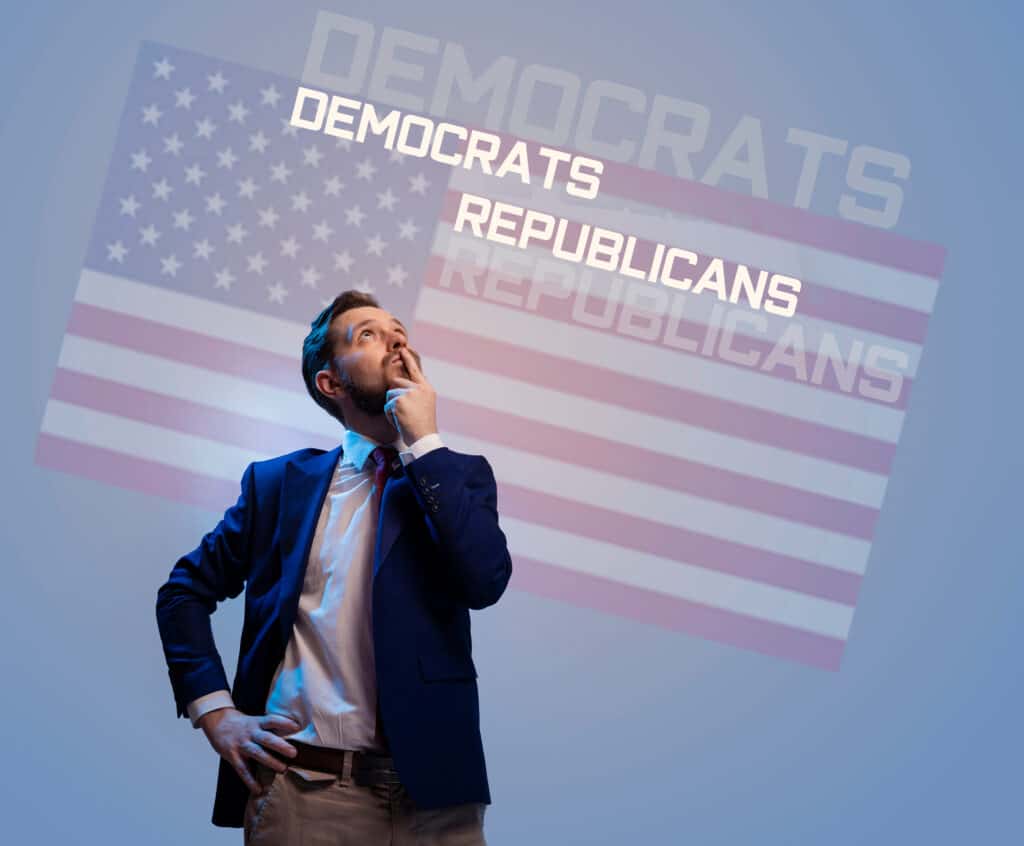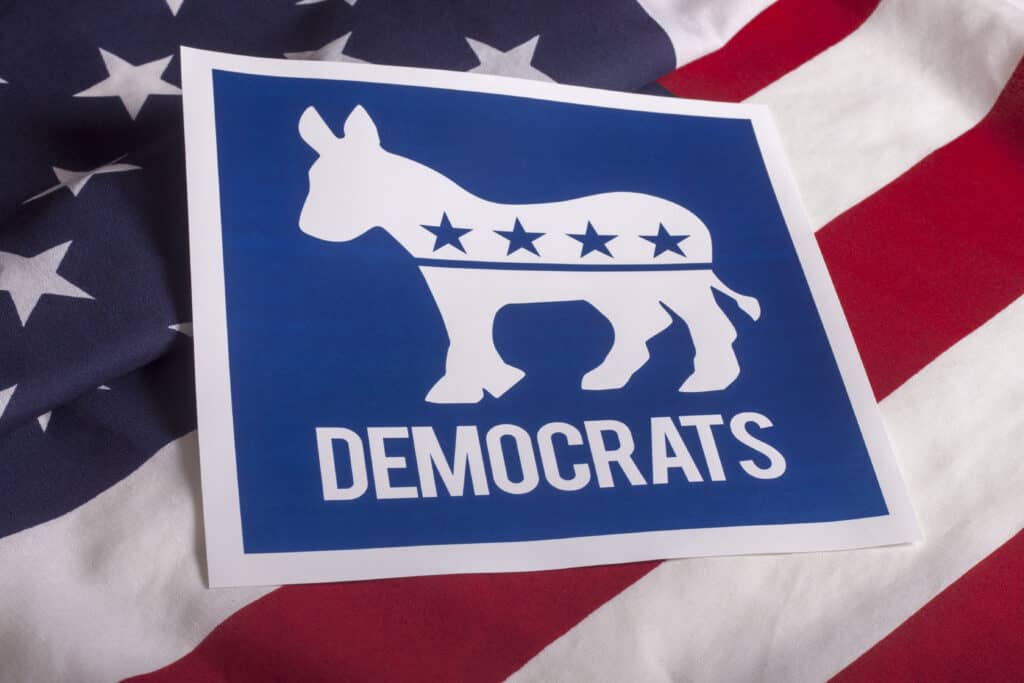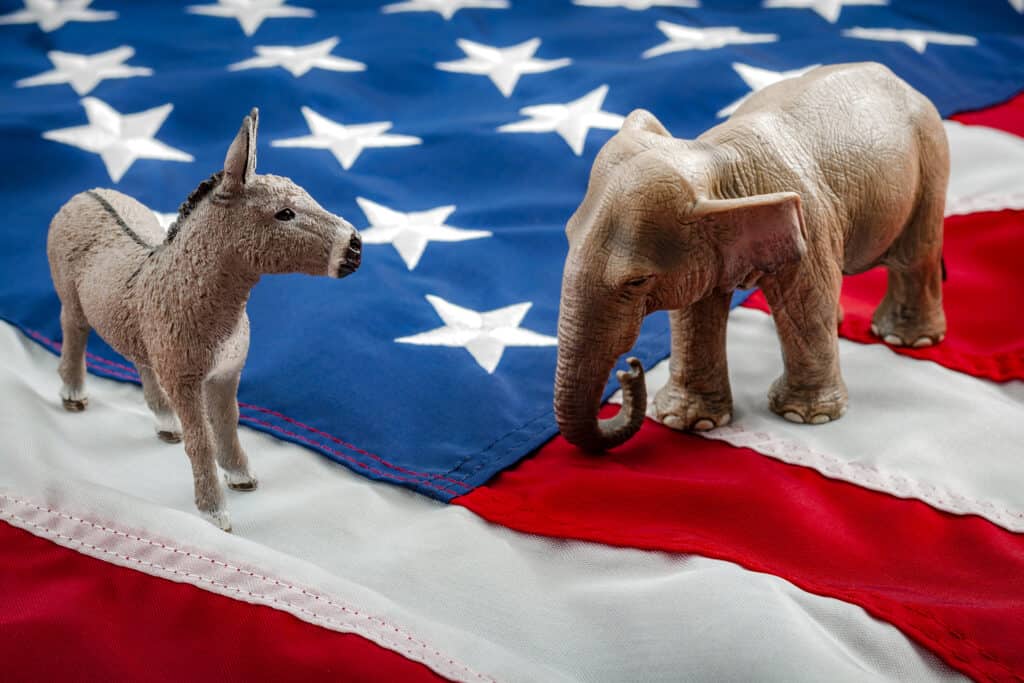The United States of America is, like many other countries of the world, a democratic state. Although there is no precise date that shows when the country first started the practice of democracy, there is evidence that shows that the history of democracy in the United States goes back all the way to the practice of the natives as far back as the 1600s. However, modern democracy, as it is known in the United States, did not become recognized until George Washington’s farewell address of 1796 was published in 1807. This address marked one of the first peaceful power transfers in American history and cemented the country’s status as a stable, democratic state.
For years, the practice of democracy has prevailed in the United States, giving the people control over the people in power and the ability to challenge laws that seem unfair. In other words, because the country is a recognized democratic state, its people also have the right to vote and be voted for and the right to impeach people in places of power.
How Many Political Parties Are in the United States?

Phoenixns/Shutterstock.com
The United States runs on a two-party system, meaning they have only two political parties. Since the 19th century, particularly the 1850s, the two parties have been the Democratic Party and the Republican Party. Although these parties are not mentioned in the U.S constitution, the two-party system is based on laws, party rules, and customs. Despite the fears of the founding fathers, a two-party rivalry developed during Washington’s second term and served as the axis of American politics until after the War of 1812.
These parties were more of an alliance between like-minded, rich men that needed to mobilize support for the candidates of their choice. However, as the country grew in size, a need for an increase in the number of political parties arose. Although the Democratic and Republican parties are the country’s two main parties, there are other smaller political parties that have only modest electoral success, usually limited to either influencing the platforms of the major parties or being left to put up candidates for other local offices. So, the United States might seem like it operates on a two-party system, it is, in fact, a multi-party system.
The Democratic Party

danielfela/Shutterstock.com
As established, the Democratic Party is one of the two major political parties in the United States. It is also the oldest in the country and one of the oldest in the world, founded almost 200 years ago in 1828. The Democratic Party was known as the party of the “common man” and stood for individual rights and state sovereignty in the early days. The present-day Democratic Party was born after the collapse of the Democratic-Republican party in 1824. The party was built by Martin Van Buren, who took the initiative to assemble several politicians in every state behind Andrew Jackson. By the mid-1830s, almost all state Democratic Parties were uniform.
The formation of the party came after the controversial presidential election of 1824, where four Democratic-Republican candidates ran against each other. Although Andrew Jackson won the election by popular vote, the House of Representatives gave the victory to John Quincy Adams. Because of this unfavorable decision, Martin Van Buren (a New York senator at the time), who was a supporter of Andrew Jackson, decided to build the Democratic Party to solely back Andrew Jackson.
Why The Democratic Party’s Mascot is a Donkey
The mascot of the Democratic Party is a donkey. At the same time, that of the Republican Party is an elephant, and these two symbols have been a part of U.S politics since the 19th century. The origins of the Democratic Party’s donkey can be traced back to the 1828 presidential campaign of Andrew Jackson. During the race, his opponents went out of their way to mock his campaign and what it stood for.
According to political historians, Andrew Jackson’s name was abbreviated to “A. Jack-ass” out of resentment. Many of them called him a Jackass, but he did not react as they thought he would. Instead of getting upset as others would, he embraced the name and even added the picture of a Jackass, a male donkey, to his campaign posters. The Democrats saw the donkey as a representation of the hard-working ordinary man, as opposed to Jackson’s adversaries, who saw it as a symbol of stupidity and stubbornness. Andrew Jackson went on to defeat incumbent John Quincy Adams and served as America’s first Democratic president. Nowadays, it is common to find Democratic symbols with a red, white, and blue donkey and four white stars on a wide variety of buttons, campaign marketing strategies, and banners.
The Difference Between the Democratic Party’s Mascot and the Republican Party’s Mascot

Victor Moussa/Shutterstock.com
By the 1870s, popular political cartoonist Thomas Nast helped make the donkey image even more popular as the party’s mascot. For many years, the Republicans used the emblem as a sort of jab, which may have had an impact on Thomas Nast’s well-known cartoon from 1870. Apart from popularizing the mascot of the Democratic Party, Nast also indirectly made the Republican Party’s mascot. Soldiers used the term “seeing the elephant” to mean experiencing combat, but the elephant did not become a political mascot until after one of Nast’s viral cartoons.
In 1874, Nast made a drawing of a donkey in a lion’s skin, scaring all the other animals in the forest. One of the other animals that Nast added to this picture was an elephant that was also scared of the donkey in the lion’s skin, and he labeled this elephant “The Republican Vote.” The animals in the cartoon represented other minor parties, and although he had labeled all the animals, the elephant was the only one Nast had placed close to a pit. The drawing was called “The Third-Term Panic,” and was made to mock the New York Herald, which had rumored that President Ulysses Grant was out to run for a third term. In later cartoons during the 1870s, Nast used the elephant to represent Republicans, and by 1880, other cartoonists were also utilizing the beast to represent the party.
Elephants appear to possess greater strength and wisdom than donkeys. The simplicity of the donkey and its labor past make sense as the Democrats are a more populist-oriented party. Contrary to how Republicans consider it as loud, obstinate, ignorant, and unintelligent; the donkey is seen as a symbol of humility.
Up Next:
The ‘Join, or Die’ Flag vs. ‘Don’t Tread on Me’ Compared. History, Meaning, and More
Top 9 Animals Elected to Office in the United States
The ‘Join, or Die’ Snake Flag’s Surprising History, Meaning, and More
The post Discover Why the Democratic Party’s “Mascot” Is a Donkey appeared first on AZ Animals.
from Animal News, Facts, Rankings, and More! - AZ Animals https://ift.tt/8cwKtB5